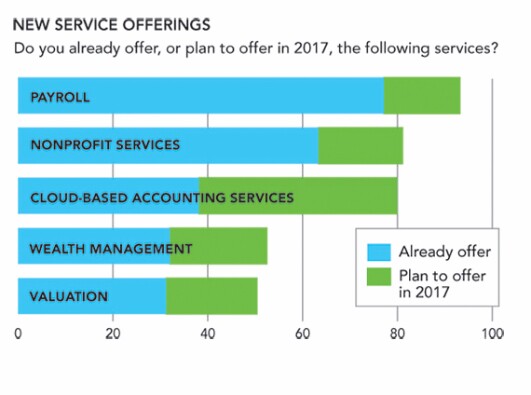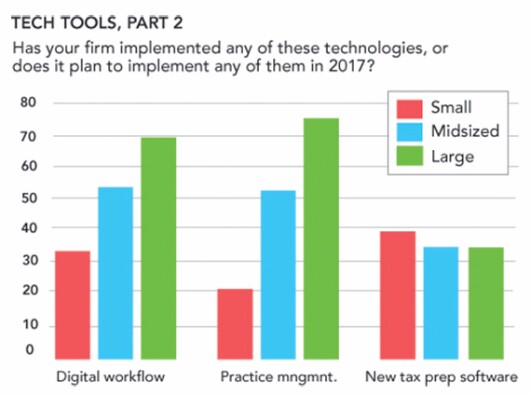
Predictions and Plans for the New Year
You can also read what a panel of industry experts and thought leaders expect 2017 to bring the accounting profession

1. Growth Expectations, Pt. 1
Breakdown for small firms: Over 10 percent 27.6 percent (more than four percentage points lower than expected for 2016); 8-9 percent 4.6 percent; 6-7 percent 4.6 percent; 4-5 percent 17.9 percent; 2-3 percent 16.8 percent; 1 percent 7.1 percent; flat or decline 21.5 percent.

2. Growth Expectations, Pt. 2
Breakdown for large firms: Over 10 percent -- 21.2 percent; 8-9 percent 9.4 percent; 6-7 percent 14.3 percent; 4-5 percent 30 percent (up more than seven percentage points from last year); 2-3 percent -- 19.7 percent; 1 percent 1.5 percent; flat or decline 6.9 percent.

3. Biggest Issues: Small Firms
Respondents rated the Affordable Care Act as a significantly less important issue, with only 17 percent citing it, against more than 30 percent last year.

4. Biggest Issues: Midsized Firms

5. Biggest Issues: Large Firms

6. Tax Season Expectations

7. Making Plans

8. New Services
Payroll was the service with the most penetration -- 77 percent of firms already offer it, and 16 percent plan to add it in 2017; nonprofit services came in second, with 63 percent of firms currently offering it, and 18 percent planning on adding it.

9. Technology Spending

10. New Technologies, Pt. 1

11. New Technologies, Pt. 2






